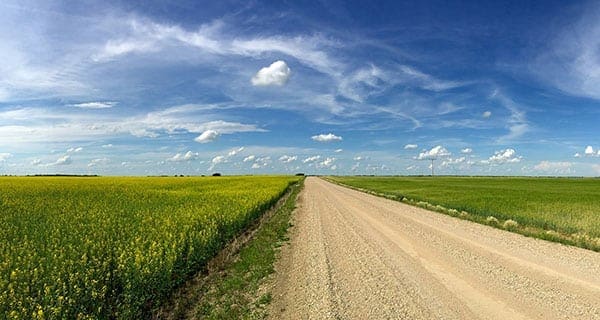 “Why can’t Al Gore be right?” asked my friend as we suffered another bitter Canadian winter.
“Why can’t Al Gore be right?” asked my friend as we suffered another bitter Canadian winter.
Intolerable Januaries aside, global warming alarmists suggest we should be happy if global warming doesn’t occur. But that may not be the case, especially for Canadians.
A recent scientific analysis says that if climate models are correct, Canada could claim enormous amounts of new cropland before the end of the century. The implications are transformational, not only for the millions of square kilometres that could grow crops for the first time, but also for the direction of scientific research and government policy.
In May 2018, Nature.com published a study entitled Northward shift of the agricultural climate zone under 21st-century global climate change. It represented the collaborative work of six academics, including some from Newfoundland’s Memorial University. The idea was to use models to anticipate what new lands could support crops due to climate change increasing the number of growing degree days (GDD). This represents the degrees Celsius above a base temperature (+5C for most crops) for each day within the frost-free growing season.
The GDD required by small cereals such as oats and barley was the threshold to map out the future frontiers of agricultural land. Averages were taken for seven climate models to mark out a map of what areas, on average, passed, met or surpassed the base GDD by 2099.
The results are, well, Earth-changing. Worldwide, just one-quarter of boreal areas now grow crops but, by the end of the century, it could look more like three-quarters. In this scenario, the reach of arable land could extend north another 400 to 600 kilometres in Russia, Finland and western Asia; 900 kilometres in Alberta; and 1,200 kilometres in eastern Siberia. This means an additional 10 million square kilometres could turn to farmland, with 5.1 million of them in Russia and 3.1 million in Canada.
The authors also predict “transformational” effects on local land use in Finland, Sweden and Kyrgyzstan. Cropland north of the 70th parallel could become a reality.
But the idea of farming far above the Arctic Circle might be far-fetched. Two peer-reviewed studies released in 2017 suggest the models have it wrong when it comes to the effects of greenhouse gases on temperatures.
John Christy and Richard McNider’s Satellite Bulk Tropospheric Temperatures as a Metric for Climate Sensitivity, published in the Asia-Pacific Journal of Atmospheric Sciences, demonstrated that global warming since 1979 was only half of what models suggested it should be.
Similarly, Nature Geoscience published Causes of differences in model and satellite tropospheric warming rates to show that the post-2000 global warming predicted by climate models just wasn’t there.
Together, these studies challenge Canada’s prevailing perception of climate change and our approach to tackling it.
The science is neither as settled in its assessment nor as cataclysmic in its implications as many Canadians have been led to believe. Policy-makers and researchers have been too narrow in their focus on predicting climate change’s effects and its emphasis on prevention of those effects by limiting fossil fuels. Billions of dollars spent on solar and wind energy, carbon taxation, and regulatory burdens on the production, transportation, and consumption of fossil fuels slow economic growth far more than world temperatures.
If Canada stopped all industry, had zero agriculture, produced no oil and no fires ever burned, 98.4 percent of annual global greenhouse gas emissions would still be there. Yet if the globe warmed as much as the climate models suggest, the increase in Canadian arable land would be an area two times the size of Quebec.
So why does Canada look at climate change with fear and trepidation instead of hope and preparation?
The Nature.com study on the northward shift says if northern regions like Canada want to be ready, there’s work to be done. Seasonal precipitation could be less than ideal in many areas, so winter water storage, summer irrigation and further development of drought-adapted plants will be necessary to seize the opportunities in many areas. By contrast, on both Atlantic and Pacific coasts, Canada’s boreal regions will get more rain during the growing season than they currently do. This is generally helpful, but it will require more measures to control erosion and drainage.
If climate change does wipe out agricultural lands in some places, it will make land conversions and food security more important than ever. In this regard, Newfoundland and Labrador provided the study’s sole example of a government “pursuing a food security policy that includes expansion of agriculture on its territory, currently mainly covered by boreal forests.” In 2017, the province announced a five-year plan to double its farmland and increase its food security by at least 20 percent.
Commentator Rex Murphy once quipped, “Vegetables require two things: soil and sunshine and Newfoundland has neither!” Yet Newfoundland expects a brighter future and is ready to pursue practical changes to get there.
Hopefully, the rest of Canada will soon follow.
Lee Harding is a research associate with the Frontier Centre of Public Policy.
The views, opinions and positions expressed by columnists and contributors are the author’s alone. They do not inherently or expressly reflect the views, opinions and/or positions of our publication.


